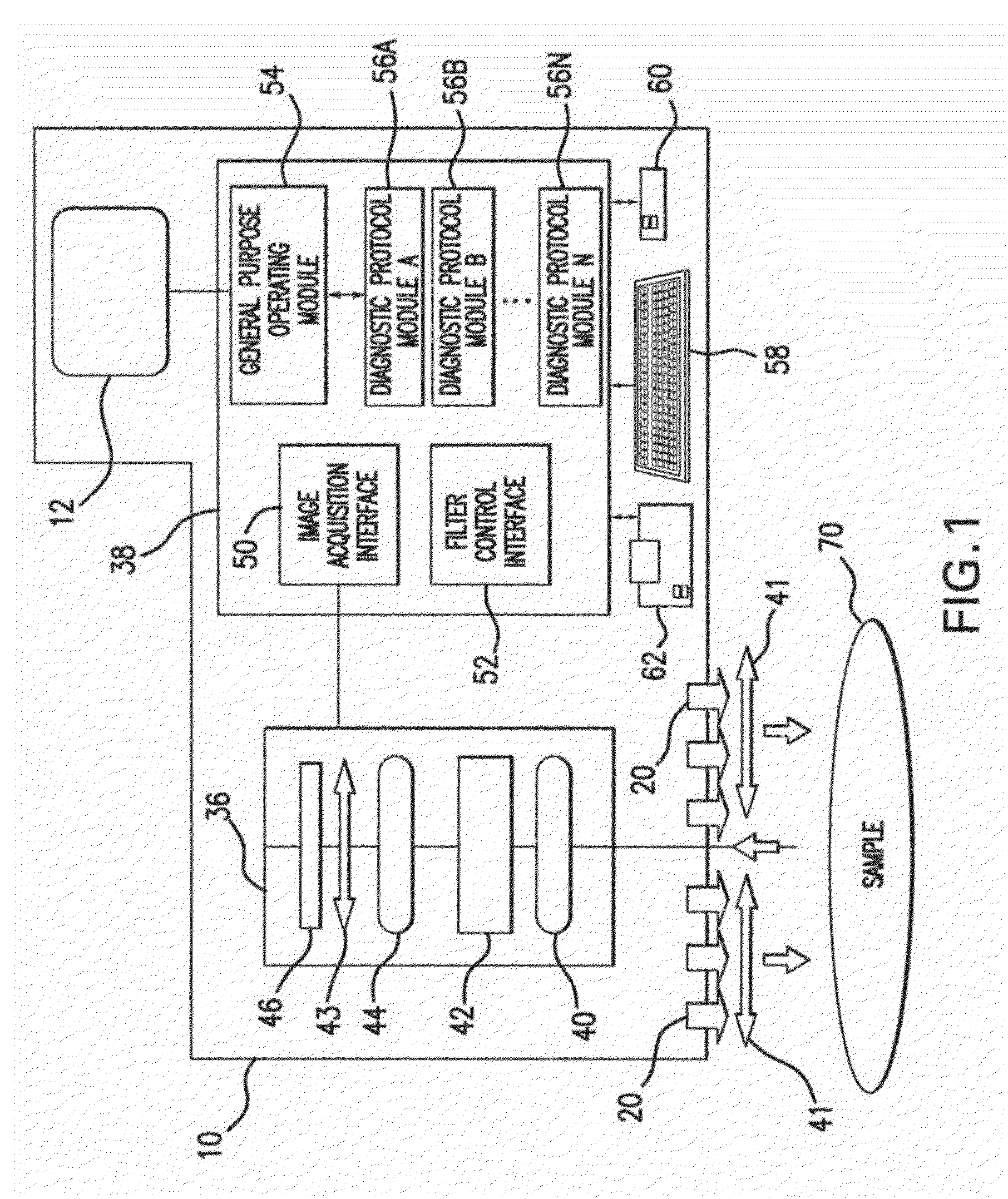Hyperspectral/multispectral imaging in determination, assessment and monitoring of systemic physiology and shock
a multi-spectral imaging and systemic physiology technology, applied in the direction of instruments, catheters, optical radiation measurement, etc., can solve the problems of insufficient circulation to meet metabolic demands, alterations in cellular metabolism in various tissues, and uncontrolled hemorrhage accounts for up to 82% of early operative deaths
- Summary
- Abstract
- Description
- Claims
- Application Information
AI Technical Summary
Benefits of technology
Problems solved by technology
Method used
Image
Examples
examples
[0182]First a target ROI is selected, preferably this is localized tissue, and more preferably a patch of skin and most preferably a patch of skin that is relatively hairless and relatively flat such as the forearm. Other potential sites of preference include the cheek, thigh, deltopectoral region. In an alternate embodiment, the localized tissue is buccal mucosa, rectal mucosa, bladder mucosa, intra abdominal serosa or other tissue available for imaging. We then collect spectral data from the ROI or a portion of the ROI at a pre-specified distance or at a distance that is measured or estimated or recorded. Preferably this is less than 10 feet and more preferably between six and 36 inches, and most preferably between 12 and 18 inches.
[0183]In another embodiment, the preferred distance is between 0.1 and 6 inches, more preferably between 0.5 and 2 inches. In another embodiment, the preferred distance is between 10 feet and 1000 feet, more preferably between 10 and 300 feet and more p...
PUM
| Property | Measurement | Unit |
|---|---|---|
| pressure | aaaaa | aaaaa |
| wavelength | aaaaa | aaaaa |
| wavelength | aaaaa | aaaaa |
Abstract
Description
Claims
Application Information
 Login to View More
Login to View More - R&D
- Intellectual Property
- Life Sciences
- Materials
- Tech Scout
- Unparalleled Data Quality
- Higher Quality Content
- 60% Fewer Hallucinations
Browse by: Latest US Patents, China's latest patents, Technical Efficacy Thesaurus, Application Domain, Technology Topic, Popular Technical Reports.
© 2025 PatSnap. All rights reserved.Legal|Privacy policy|Modern Slavery Act Transparency Statement|Sitemap|About US| Contact US: help@patsnap.com



